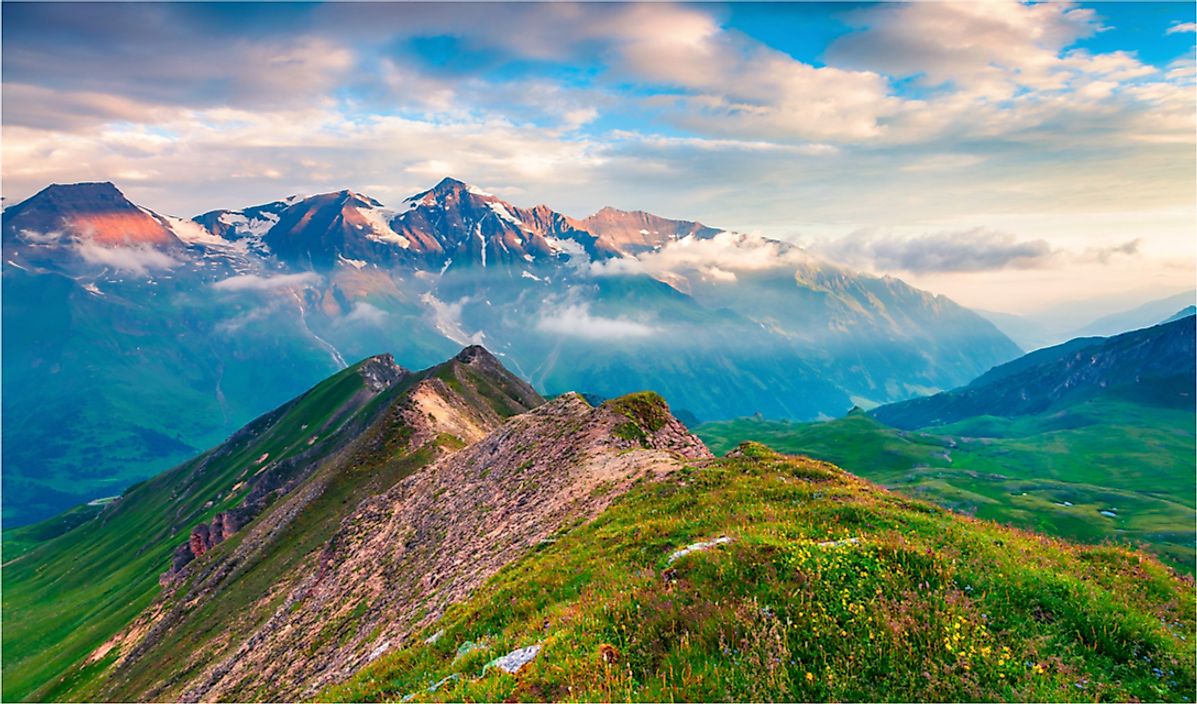What are the Alpine Countries of Europe?

What are the Alpine Countries of Europe?
The Alpine countries of Europe is a term used to refer to the area around the Alps mountains. Defined by the Alpine Convention in 1991, the eight Alpine states include: Italy, France, Austria, Switzerland, Liechtenstein, Germany, Slovenia, Monaco. Of these countries, Austria and Switzerland have the largest area of mountain coverage, while the borders of Liechtenstein and Monaco are both located completely within the Alpine region. Additionally, approximately 6,200 municipalities, 83 territorial units, and 3 local administrative divisions are represented within these Alpine countries.
What is the Alpine Convention?
The Alpine Convention is an international agreement established in order to protect the ecosystem of the Alps and to allow for sustainable economic development in the region. It has been in effect since 1995 and covers a total area of 73,636 square miles, 746 miles at its longest and 186 at its widest.
Representatives from the Alpine countries serve on the Permanent Committee, which acts as an executive body. This body is responsible for establishing work groups that create protocols and recommendations for the member countries to follow. Additionally, these working groups conduct research on current development projects and present their findings to the Permanent Committee. Some of the current working groups focus on the following issues: natural hazards, mountain farming, sustainable tourism, transport, mountain forests, ecological network, large carnivores and wild ungulates, and water management.
Mountains Within the Alpine Countries
A total of 1,599 peaks are found throughout the Alpine countries. Of these, only 29 measure 4,000 meters above sea level or higher. The majority of these tall mountains are located in Switzerland (24). This is followed by Italy (7) and France (4). Despite the fact that Switzerland and Austria have the largest mountain coverage, Italy has the largest number of mountain peaks. 570 separate peaks have been recorded in Italy. These peaks are divided into the following categories: 2,000 meters or more above sea level (149), 2,500 meters or more (197), 3,000 meters or more (169), 3,500 meters or more (48), and 4,000 meters or more (7).
Environment of the Alpine Countries
Because many of the Alpine countries have a wide range of environmental habitats, this section will focus only on the Alpine environment that these 8 countries share. Throughout the Alps mountains, forests and semi-natural grasslands can be found at lower elevations. As elevation increases, however, large trees become less common as they are unable to survive the conditions, and alpine grass and scrublands take over the landscape. At the top of the mountains, very few plants are able to survive among the rocks, snow, and ice. Not only does the overall habitat change with increasing elevation, but the climate does as well. The Alps are home to a number of micro-climates, which results in a high level of biodiversity.
The mountainous region portions of the Alpine countries are home to 134 animal species, 105 environmental habitats, and 97 plant species. These plants represent approximately 66% of all plant species found in Europe. Some of the animal species living here include: the Alpine ibex, snow vole, wolf, eagle, bear, ptarmigan, and lynx.
Which Are The Alpine Countries Of Europe?
| Rank | Country | 2000+ | 2500+ | 3000+ | 3500+ | 4000+ | Total |
|---|---|---|---|---|---|---|---|
| 1 | Austria (AT) | 206 | 150 | 93 | 14 | 0 | 463 |
| 2 | France (FR) | 71 | 95 | 75 | 40 | 4 | 285 |
| 3 | Germany (DE) | 14 | 11 | 0 | 0 | 0 | 25 |
| 4 | Italy (IT) | 149 | 197 | 169 | 48 | 7 | 570 |
| 5 | Liechtenstein (LI) | 4 | 1 | 0 | 0 | 0 | 5 |
| 6 | Slovenia (SI) | 22 | 9 | 0 | 0 | 0 | 31 |
| 7 | Switzerland (CH) | 66 | 114 | 147 | 44 | 24 | 395 |
| 8 | Alps total | 507 | 530 | 416 | 117 | 29 | 1599 |











